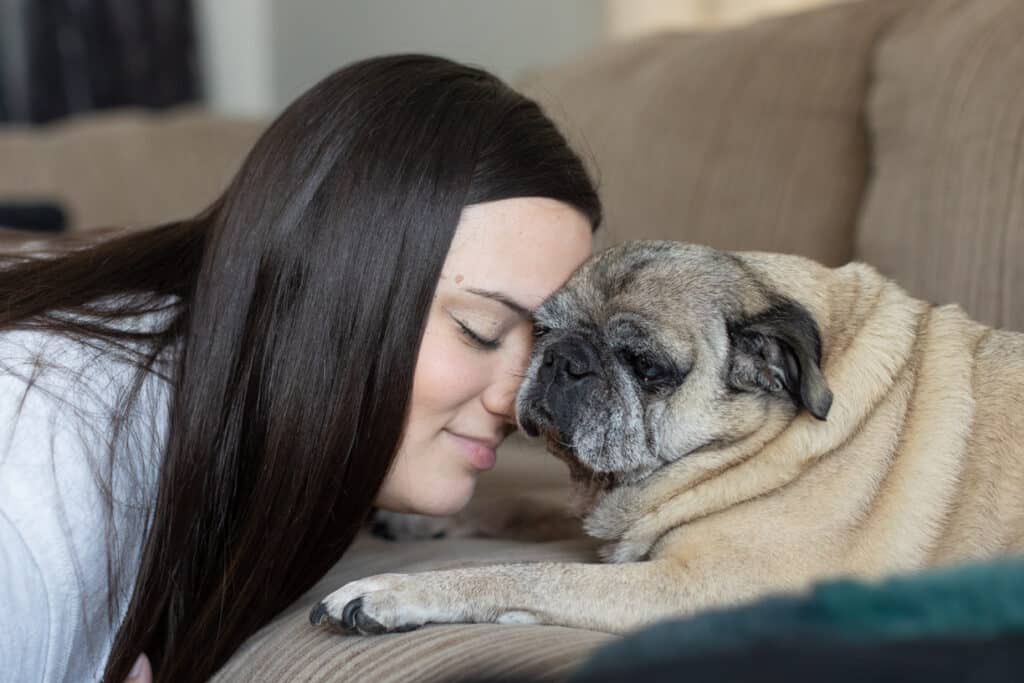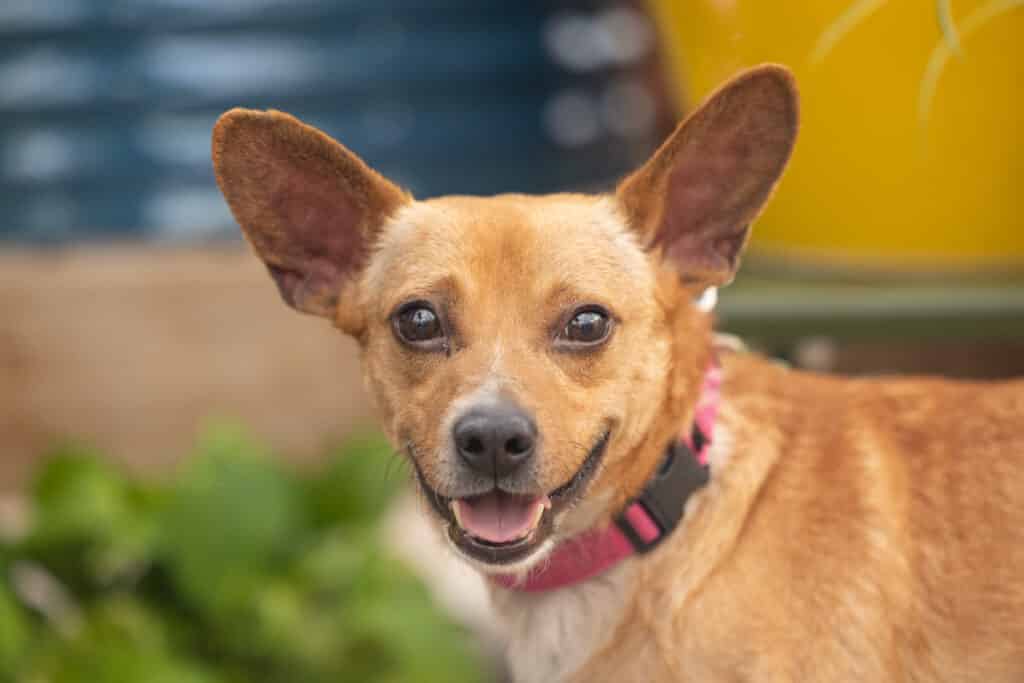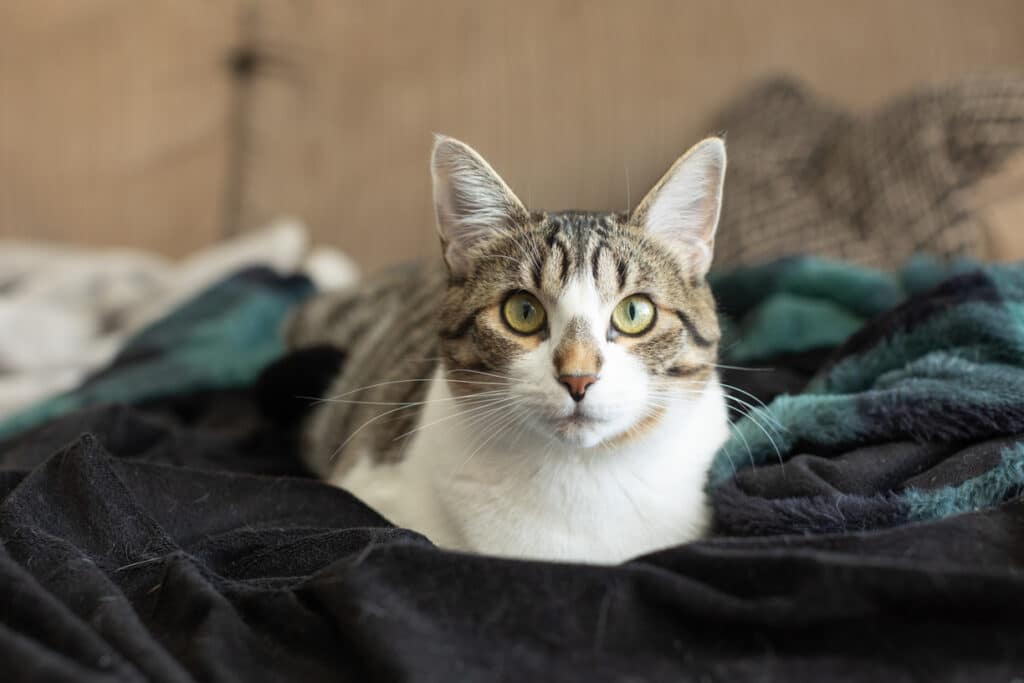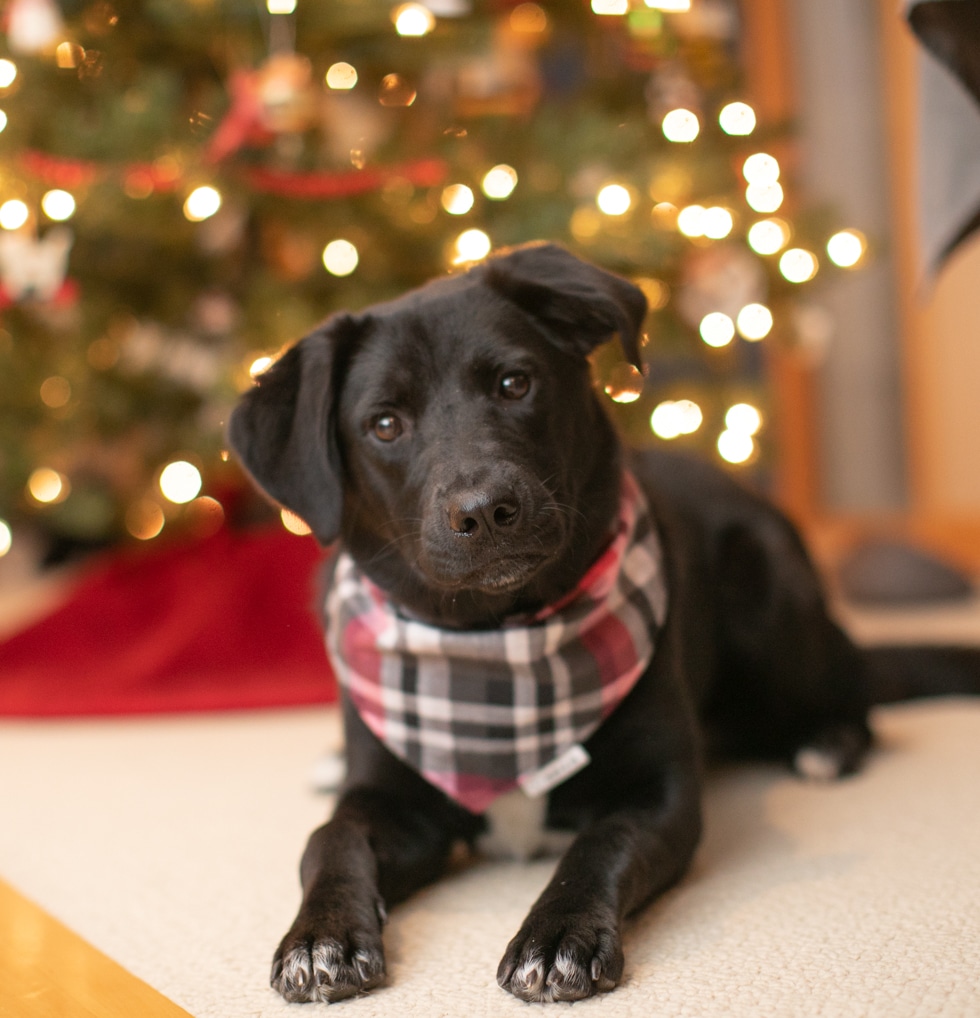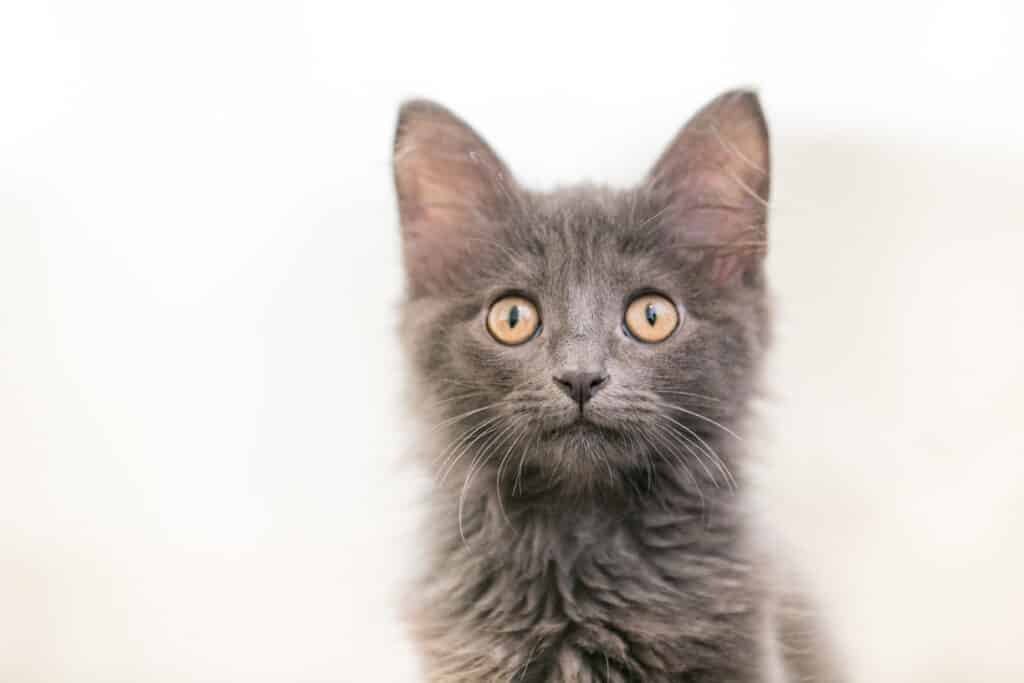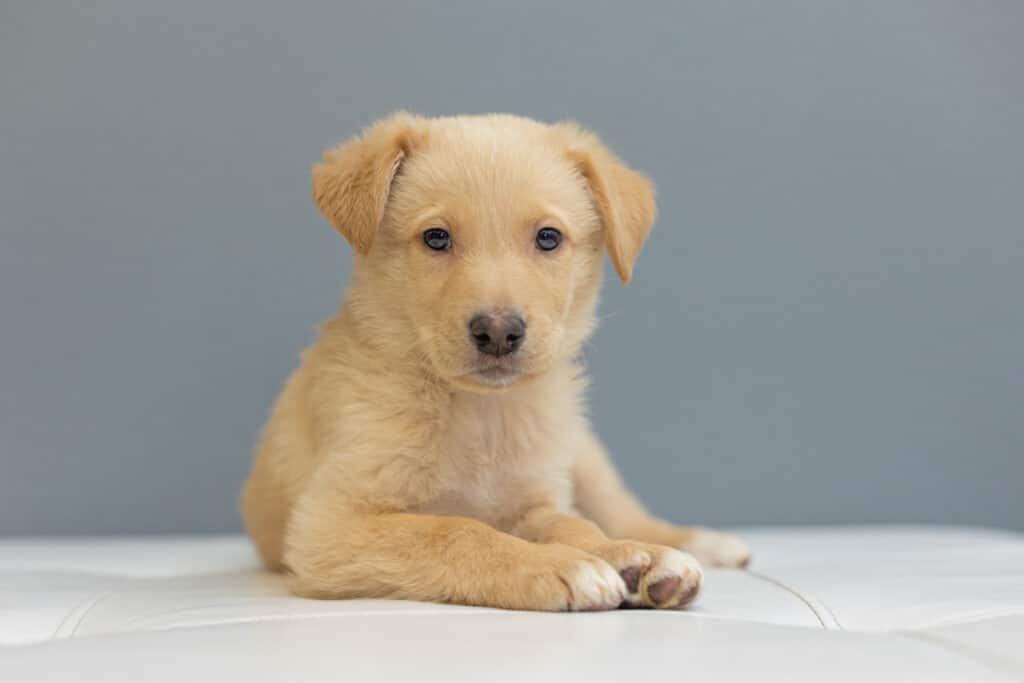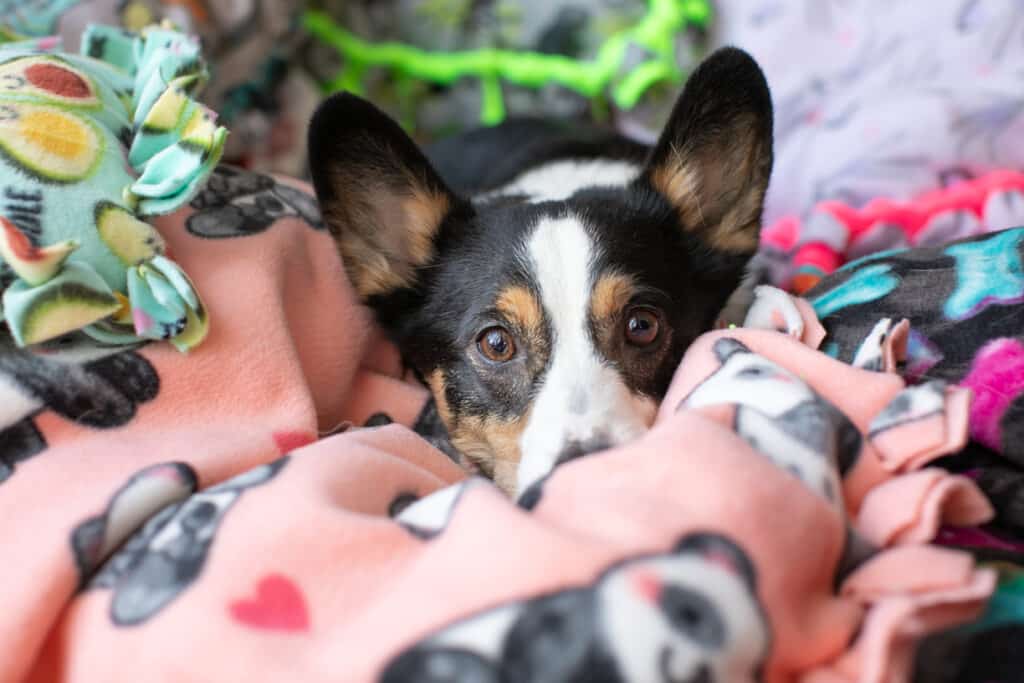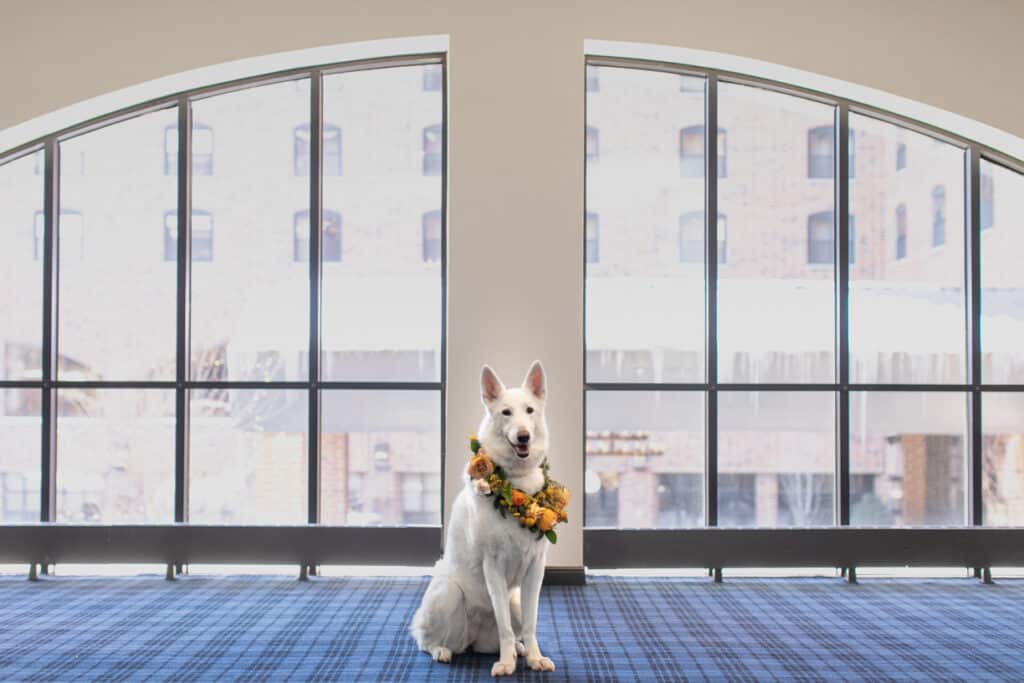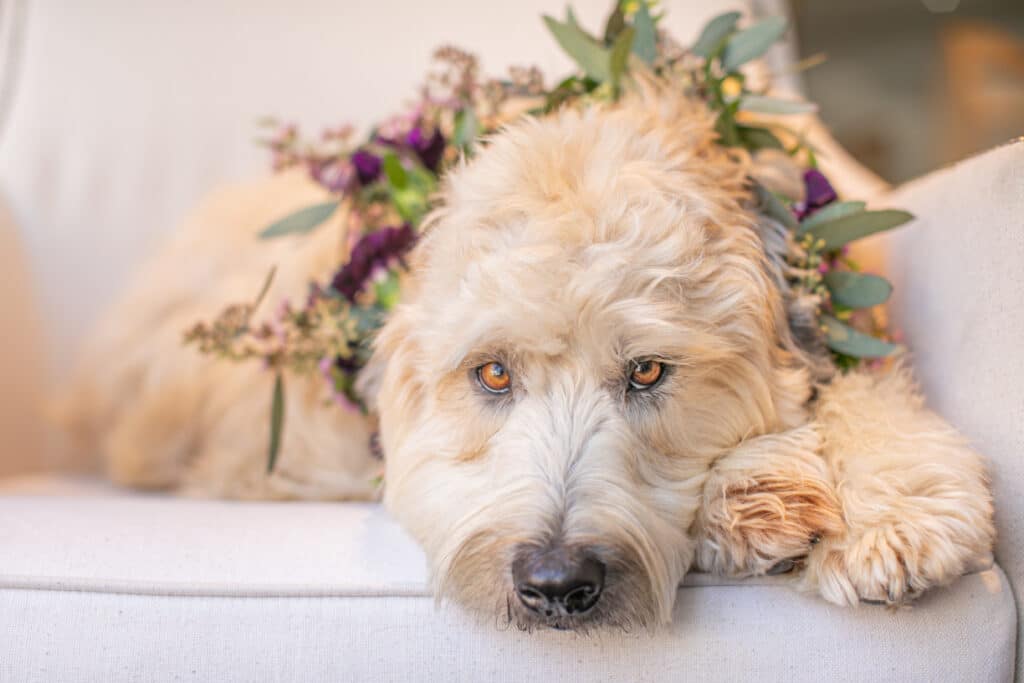Photographing dogs indoors can be challenging, but here are some tips to help you get great shots:
- Use natural light: Try to use as much natural light as possible by positioning your dog near a window or door. Avoid using harsh artificial light or using the flash whenever possible, which can startle dogs.
- Choose the right background: Select a clean and simple background that won’t distract from your dog. You can use a plain wall or a cleaned off chair or couch work great too. Getting them up on a human bed is great too
- Get down to their level: To capture your dog’s perspective, get down to their eye level. This will help you take more engaging and dynamic shots. You can use other perspectives too to mix it up
- Use a fast shutter speed: Dogs are often fast-moving creatures, so use a fast shutter speed to capture them in action. A shutter speed of 1/250 or higher is recommended.
- Shoot in burst mode: Shooting in burst mode can help you capture multiple shots in a short amount of time. This is especially useful when your dog is moving around. I’ve also been told live mode works similar
- Use treats and toys: Using treats and toys can help keep your dog engaged and focused on the camera. This will help you get more natural and expressive shots. I always recommend starting photos without these but adding them in when needed. Know what will get your pets attention best
- Be patient: Dogs can be unpredictable and may not always cooperate, so be patient and take your time. Don’t force your dog to do anything they’re not comfortable with. If you get stressed quickly they may pick up on that
- Set a wide aperture for a blurred background: A wide aperture (low f-stop number) creates a shallow depth of field, blurring the background and making your dog the main focus. This technique helps draw attention to your dog’s face and eyes.
- Capture their natural behavior: Candid shots often result in the most authentic and memorable photographs. Let your dog be themselves and capture their unique behaviors, expressions, and quirks.
- Focus on the eyes: The eyes are the windows to the soul, and focusing on them can create a captivating and emotional photograph. Ensure the eyes are sharp and in focus to draw viewers into the image.
Remember, photographing dogs can be challenging, but it’s also a lot of fun. Enjoy the process, be patient, and cherish the moments you capture with your furry friend. Also know that having a second set of hands is always helpful. Someone to get the dog in position is great.
Knowing how to photograph your own dogs or foster dogs is important for several reasons:
- Capturing memories: Dogs bring joy and companionship to our lives, and being able to photograph them allows us to preserve those special moments and create lasting memories. A well-taken photograph can evoke emotions and serve as a reminder of the bond we share with our pets.
- Adoption promotion: If you’re fostering dogs or involved in rescue work, high-quality photographs can significantly increase their chances of getting adopted. Good photos can showcase the dog’s personality, capturing the attention of potential adopters and creating a positive first impression.
- Sharing experiences: Sharing photos of your dogs or foster dogs with friends, family, and social media followers allows others to appreciate and enjoy the unique qualities of your furry companions. It also provides an opportunity to educate and raise awareness about responsible pet ownership, rescue organizations, and the importance of adoption.
- Fundraising and advocacy: Well-captured images can be powerful tools for fundraising campaigns or advocacy efforts. Compelling photos can help generate support for animal welfare causes, attract donations, and encourage people to get involved in helping dogs in need.
- Documenting behavior and health: Photographs can also be useful for documenting a dog’s behavior or physical condition over time. This can be valuable when working with trainers, behaviorists, or veterinarians to monitor progress, identify changes, or address any health concerns.
Overall, knowing how to photograph dogs allows you to capture their unique personalities, share their stories, and make a positive impact in their lives. It’s a skill that can bring joy, raise awareness, and contribute to the welfare of dogs in various ways.

